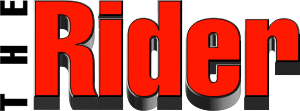
New Ration Balancer Info-sheet, Forage and the Importance of Analysis
Guelph, ON April, 3, 2024 - With the cost of feeding horses continuing to rise, horse owners need to become savvy when it comes to feeding their herd on a budget without compromising equine nutrition. A greater understanding of forage, the largest component of the equine diet, really improves the bottom line of those feed bills, when one is only adding what is needed to balance the diet. Join expert in the field, Dr. Paul Sharpe, for the Introduction to Forage online course offered on TheHorsePortal.ca, Apr 8 - 19, 2024.
Sharpe will provide practical advice and answer questions on selecting, feeding, and managing forage as well as strategies for growing healthy pasture. The discussion forum will also give participants plenty to chew on!
Forage is the most important component in your horse’s diet, and it can be highly variable, so it is important to start with a hay analysis.
Paul Sharpe discusses the importance of hay analysis
Ration balancers are becoming increasingly popular for horses on forage-first diets and Equine Guelph has recently posted a free information sheet with content kindly provided by highly experienced equine nutritionist, Don Kapper.
https://www.youtube.com/watch?v=KrZeuYnlAWk
Ration balancers are products meant to provide protein (specifically essential amino acids), vitamins and minerals to a horse. These products generally have lower feeding rates, at around 1-2 pounds of product per day but they contain 20 to 25% mineral, which is 3 to 4 times the amount of mineral in horse feeds. There are zero calories in mineral, so balancers do not provide as many calories as a traditional concentrate feed. They make good options for horses that need a source of essential amino acids, vitamins, and minerals, but that do not need many additional calories in their diet. All ration balancers and horse feeds are formulated to make up the difference between what nutrients are in your forage (hay and pasture) and the nutrients recommended to maintain optimal health, growth and development, reproduction, and performance.
The protein (amino acids) and mineral percentages differ in ‘Grass’ vs. ‘Alfalfa’ forage so it is essential to know the type of the forage the horse is receiving before deciding if a ration balancer may work in your horse’s feed program. To learn about type and quality of forage, be sure to join Dr. Paul Sharpe for two weeks full of important forage facts.
He will be your guide exploring the main forms of forage and describing features and nutritional differences between the two types of plants commonly used in forages for horses: grasses and legumes. Sharpe will explain what factors affect hay and pasture quality and how to evaluate each to supply your horse with the best forage available. You will learn about new research and how to address common problems.
Co-author of textbook, Horse Pasture Management, Dr. Paul Sharpe is an animal scientist with bachelor’s degrees in Zoology, Botany, and Agriculture. His research topics, conducted at several agricultural colleges in Ontario, include forage management, pasture management and alternative forages. Sharpe is a popular guest lecturer and has taught over 22 different courses to students in equine and agriculture programs. “We need to learn to be flexible and anticipate adversity,” says Sharpe. “Many of the conditions affecting the production of forages are changeable, so it is important to be flexible in response to changes in weather, forage quality and yield, populations of weeds and pests and fluctuations of prices.”
Sharpe will be joined by guest expert and course sponsor, Sue Wilson, the developer of the slow hay feeder, OptiMizer.
Wilson is a graduate from the University of Guelph and the owner of Wishing Well Services, a company she started in 2017. Sue had a busy career in healthcare and ran a private stable near Guelph. Her horses taught her a lot about optimizing their care. A forage-first diet, outdoor living and lots of free movement were the key fundamentals for her herd. This led to the development of OptiMizer slow hay feeders which were commercialized in 2019. Sue is passionate about the benefits of slow feeding and stopping hay wastage.
Your horse will gladly spend 18 or so hours a day grazing. Spend 5 – 10 hours learning best practices for delivering optimal forage for your equine companion in this important two-week course. Introduction to Forage beginning on April, 8, 2024 on TheHorsePortal.ca.
About Equine Guelph:
Equine Guelph is the horse owners' and care givers' Centre at the University of Guelph in Canada. It is a unique partnership dedicated to the health and well-being of horses, supported and overseen by equine industry groups. Equine Guelph is the epicentre for academia, industry and government - for the good of the equine industry as a whole. For further information, visit www.equineguelph.ca.
Story by: Equine Guelph
Web Link(s):
Story web link: https://thehorseportal.ca/2024/04/balancing-act-of-equine-nutrition/
Forage course: https://thehorseportal.ca/course/introduction-to-forage-spring-24/
Video short on the importance of hay analysis with Paul Sharpe: https://www.youtube.com/watch?v=KrZeuYnlAWk
Ration Balancer Fact sheet: https://thehorseportal.ca/wp-content/uploads/2024/04/Ration-Balancer-Infosheet.pdf



